Our Experience in Lisbon, Portugal
We have just returned from our trip to Portugal, with countless photos of Lisbon captured across several memory cards. Our exploration of this often-overlooked European gem was incredibly enjoyable.
We spent two days in Lisbon before heading north to Porto, where we joined a Douro River cruise.
Initially, we were a bit puzzled when we found out that our river cruise started in Lisbon rather than Porto. At first glance, it seemed more convenient for guests to arrive at Porto’s airport instead of making a lengthy drive from Lisbon to Porto. (More on that later—be sure to look up the town of Coimbra.)
However, once our taxi departed from Lisbon International Airport, we quickly understood why the itinerary included two nights in this vibrant city. Lisbon is simply remarkable!
As we explored, we found ourselves wishing we had more than just two days; there is so much to see and do that we could have easily spent a week immersing ourselves in the city’s charm.
In short: Lisbon surpassed our expectations.
Below are some photos and unforgettable moments from our brief stay in this captivating city.

Stunning Rooftop Views from Our Lisbon Hotel
We stayed at the luxurious Tivoli Avenida Liberdade Lisboa, located on the iconic Avenida Liberdade in the heart of Lisbon. The image above was taken from the chic rooftop bar of the hotel.
How amazing are these views of Lisbon?
In the distance to the left, you can see São Jorge Castle perched on the hill, while the Tagus River stretches out further below. The green area in the foreground is filled with the tall trees lining Avenida Liberdade.

Here are more breathtaking views from the rooftop bar at Tivoli Avenida Liberdade Lisboa, which is one of the most sought-after spots for panoramic photographs of Lisbon.

Belém Tower
This is Belém Tower, also known as the Tower of St. Vincent. This stunning fortified tower, together with the nearby Jerónimos Monastery, is recognized as a UNESCO World Heritage Site.
Arguably, Belém Tower is the most significant tourist attraction in Lisbon. While we didn’t go inside this 16th-century tower, we enjoyed admiring its unique Manueline architecture.
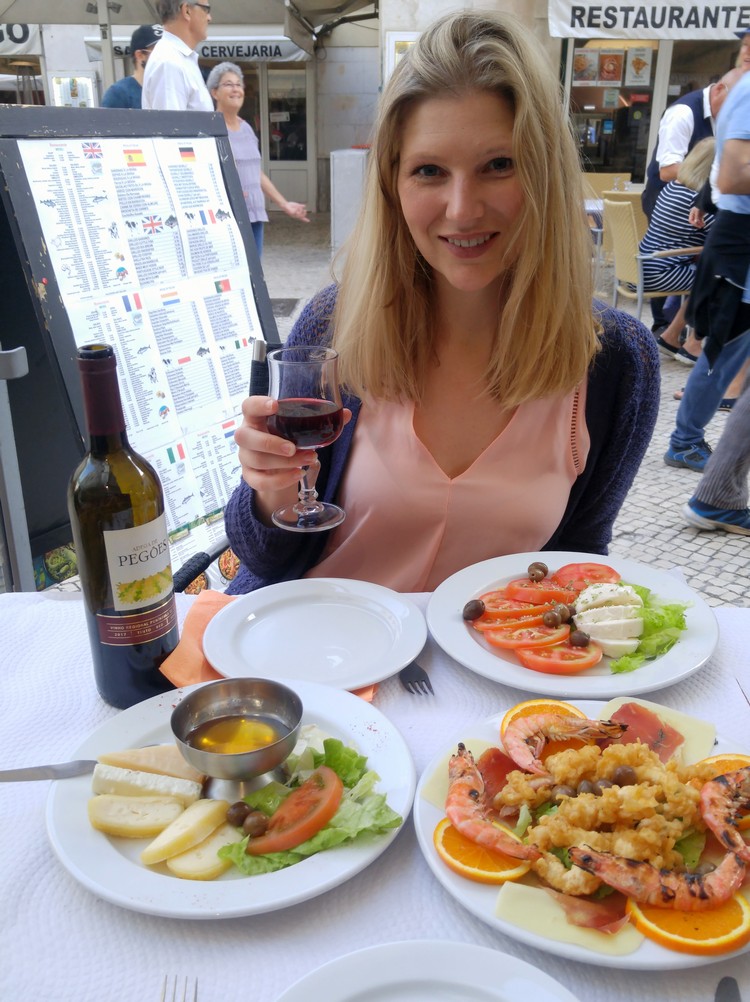
With no kids on this trip, we finally had the chance to take a few selfies together.
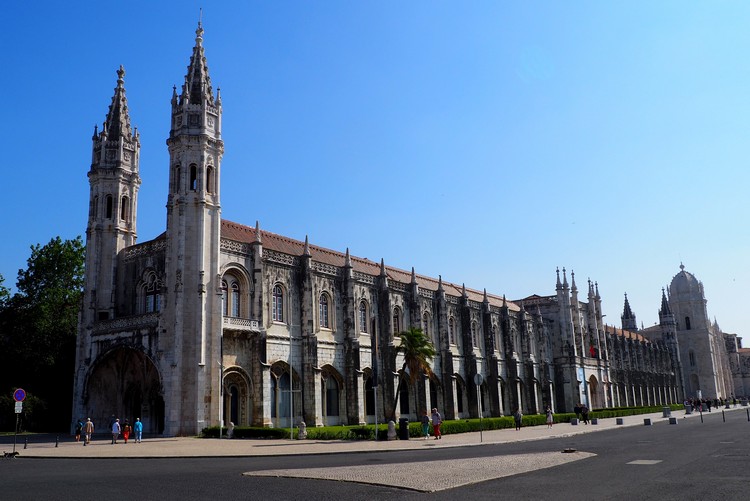
Navy Museum & Jerónimos Monastery
After visiting Belém Tower, we headed to the nearby Navy Museum. When our tour bus dropped us off in front of a Gothic-style cathedral, we were confused. This impressive building houses Lisbon’s renowned maritime museum.
The Portuguese take great pride in their maritime history.
The Portuguese Empire was one of the largest and longest-lasting empires in history, thriving for almost six centuries. The museum features over 17,000 items, including historical paintings, archaeological artifacts, and numerous ship models used in Portuguese navigation since the 15th century.
The entrance to the Navy Museum is located to the left of the photo, under the two Gothic spires.
To the right, you can also see the Jerónimos Monastery (shown in the photo below), another UNESCO World Heritage Site.

Stunning Panoramic Views and Miradouros
Lisbon is built on seven hills, providing numerous opportunities to capture breathtaking panoramic photos.
In Portuguese, these lookout points are called miradouros. We took the above and below photos from Miradouro de Nossa Senhora do Monte (check out a few other well-known miradouros in Lisbon).
São Jorge Castle (also known as St. George’s Castle) is a Moorish castle located on the Alfama hill, offering a stunning view of Lisbon’s historical center. It’s one of the city’s most popular tourist attractions.
Although we didn’t have enough time to explore inside this ancient citadel, we admired it from several miradouros around the city and from our hotel’s rooftop bar.



Incredibly Beautiful Architecture
After a full day of exploring and photographing Lisbon’s stunning architecture, our necks and feet were sore. My watch indicated we walked around 27,000 steps that day!
The old cobblestone streets of Lisbon are filled with unique, colorful buildings that date back centuries. Although we had a map highlighting major attractions, it hardly mattered.
Every corner revealed a new architectural gem, and we thoroughly enjoyed wandering through the historic streets of Lisbon.
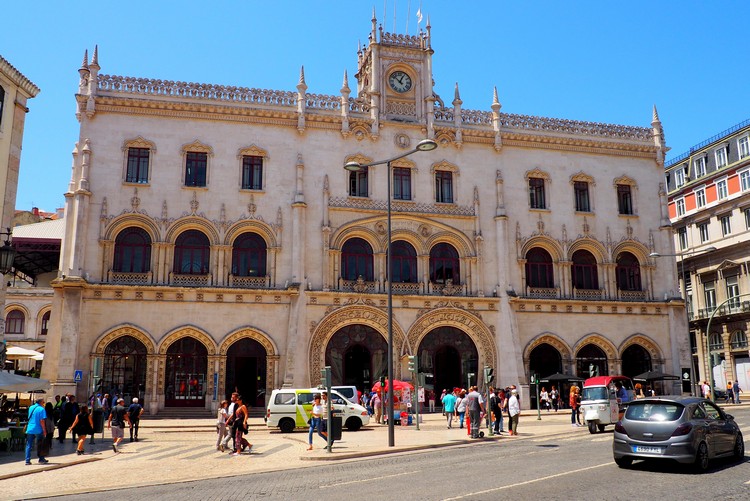

The lively Rua Augusta, with its magnificent triumphal arch in the distance.
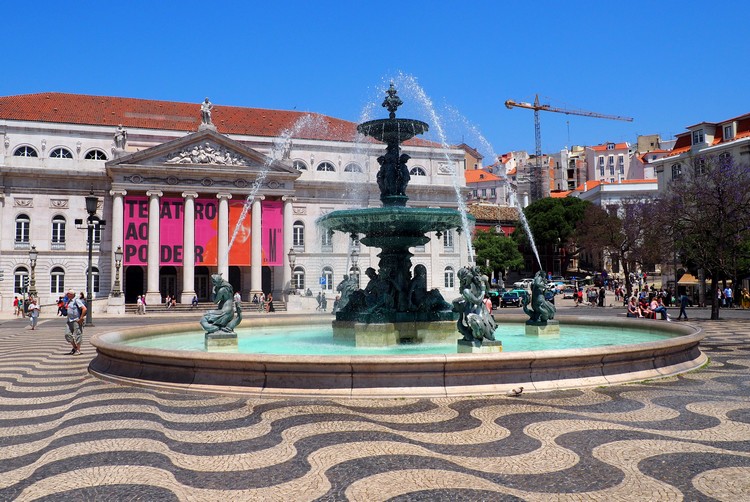
Portuguese Paving
The sidewalks and pedestrian streets in Lisbon are remarkable. In the above photo, notice the intricate wave pattern in the pavement that creates an optical illusion, making the waves appear to be moving as we strolled by a fountain in Rossio Square. It was indeed a little dizzying!
The traditional sidewalk designs in Lisbon—and much of Portugal—feature mosaic patterns made from small, flat stones.
The next photo was taken in the trendy Avenida Liberdade neighborhood.
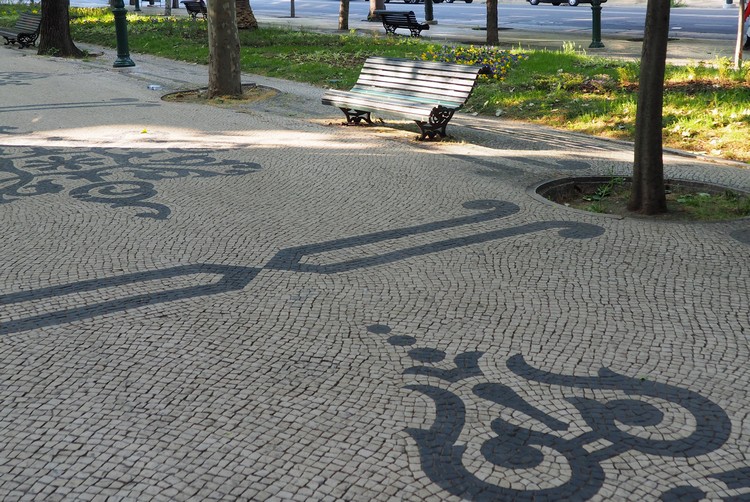
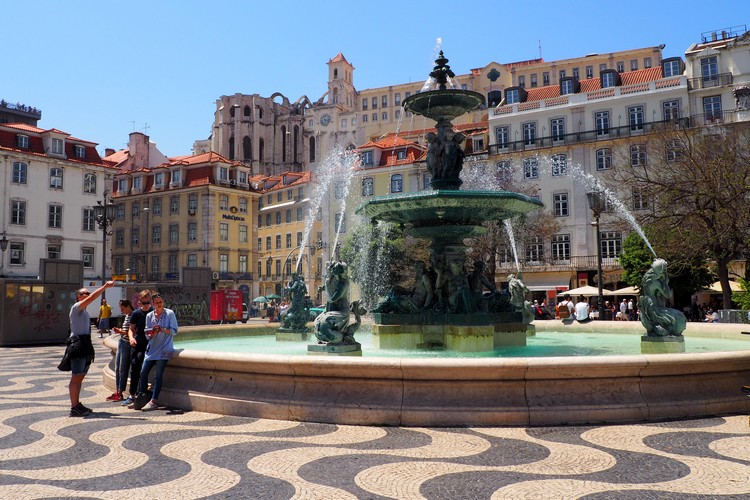
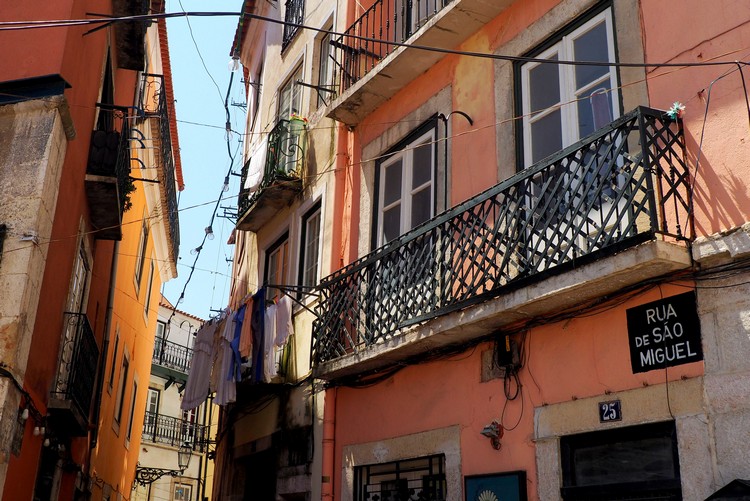
Alfama – Lisbon’s Oldest District
Alfama is the oldest neighborhood in Lisbon, extending down the hills between São Jorge Castle and the Tagus River. This medieval district served as an upper-class residential area during Moorish rule, and over time it became home to fishermen and the working-class.
Alfama is the only part of Lisbon that survived the devastating earthquake of 1755, retaining its old-world charm. Today, it is famous for its maze of narrow medieval streets, small squares, and quaint cafes and restaurants.
Our tour guide informed us that Alfama is home to Europe’s narrowest street—Rua da Judiaria.
As seen in the photo below, the narrow gap between the two buildings is indeed a street. It’s quite a popular attraction, so there’s often a wait to pass since it’s too tight for two people to walk beside each other.

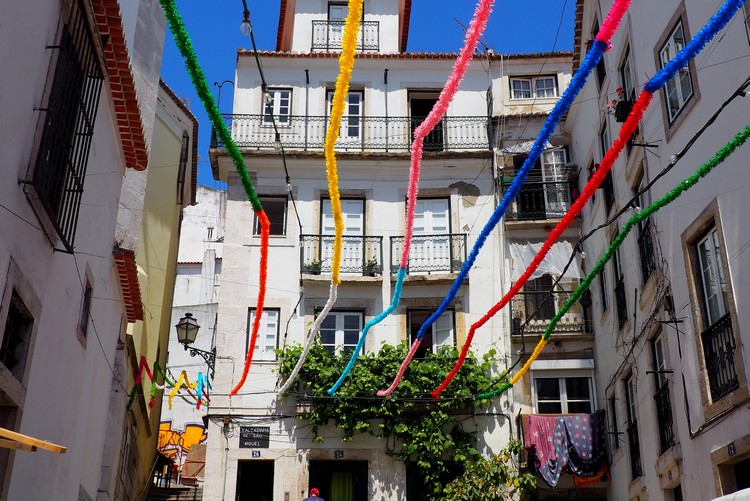
Colorful streamers adorn the narrow streets of Alfama.

Above and below, more views of the old architecture in Alfama.
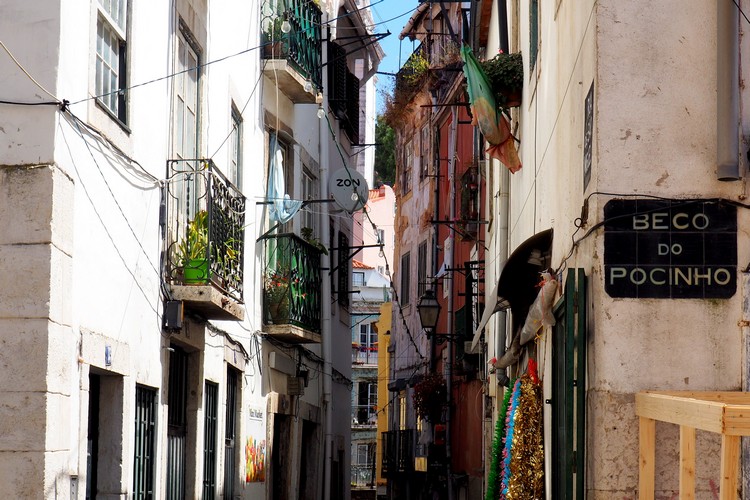
Are you following us on Facebook? If not, let’s connect!
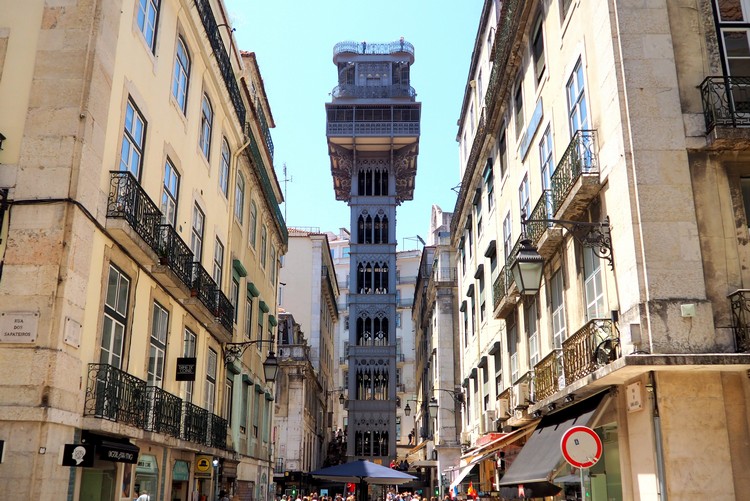
Santa Justa Lift
Above is a photo of the Santa Justa Lift, also known as the Carmo Lift. This intriguing elevator is located in the Santa Justa district. Built in the 19th century, it was originally designed to transport people up the steep hill from the Baixa district to Largo do Carmo, but it has now become a notable tourist attraction.
We didn’t have enough time to visit the observation deck atop the lift, but we hear that the panoramic views are spectacular. It’s considered one of the best spots for capturing images of Lisbon.

Monuments and Statues
As we strolled through the streets of Lisbon, it became evident that the Portuguese take great pride in their history. It felt as though there was a monument or statue on every corner, reminiscent of Buenos Aires in Argentina.
The photo above shows the Monument to the Restorers, located in Restauradores Square. Below is the Statue of King José I, located in Praça do Comércio (Commerce Square).
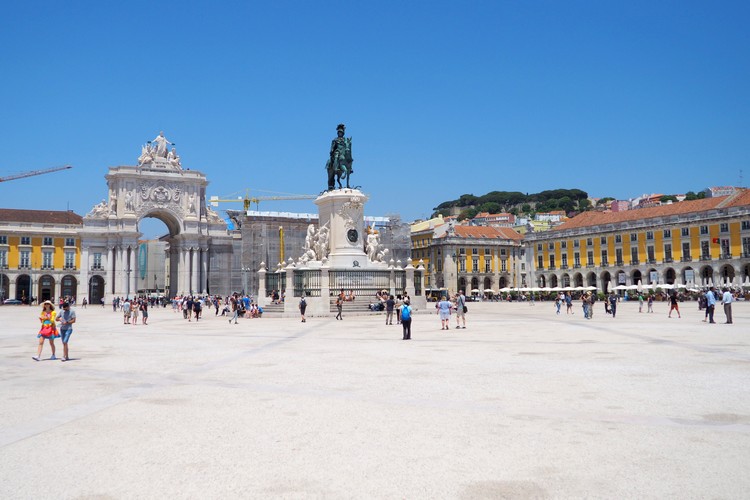
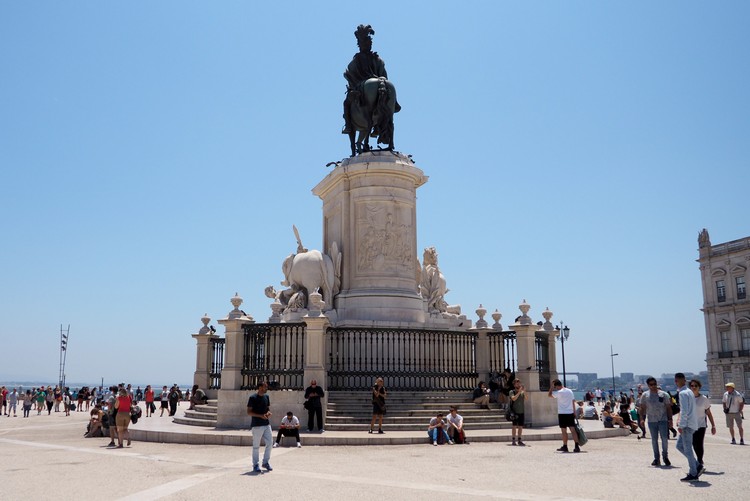


Pastel de Nata
No visit to Portugal would be complete without tasting its famous pastry—Pastel de Nata (also known as Pastel de Belém). This egg tart pastry boasts a custardy texture akin to crème brûlée.
In the 18th century, monks and nuns at Jerónimos Monastery began selling these pastries to help fund the church. At that time, monasteries utilized large quantities of egg whites for starching clothing, such as the habits worn by nuns. The leftover egg yolks were creatively used to make cakes and pastries, leading to the creation of pastel de nata.
When the monastery closed, the recipe was sold to the original owners of Fábrica de Pastéis de Belém in 1837, a business that is still thriving today.
Technically, you can only get the authentic pastel de nata at Fábrica de Pastéis de Belém.
While our tour bus passed by this original location, we saw over 100 people queuing up to buy these celebrated custard tarts.
You don’t have to wait in that long line to enjoy them; delicious pastel de nata can be found in nearly every café throughout Lisbon. Everyone must try it at least once in their life, but be warned—it’s highly addictive!
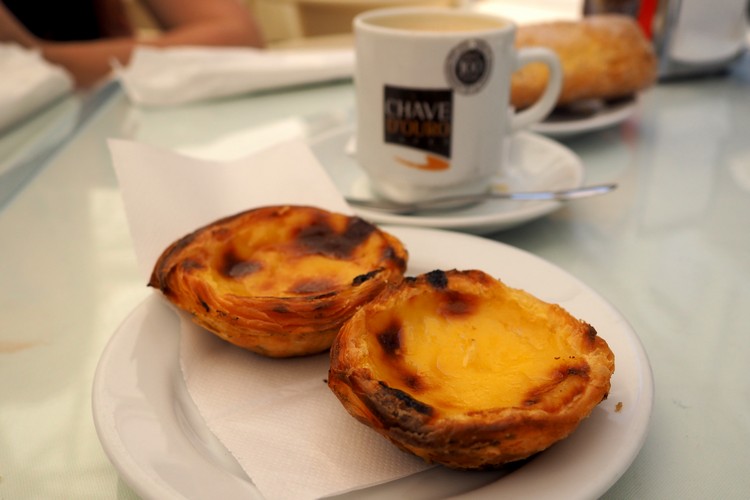

Canned Sardines?
We were astonished by the popularity of canned sardines in Portugal, with entire shops dedicated to selling them. Seriously! The above photo was taken in a store aptly named The Fantastic World of Portuguese Sardines Store.
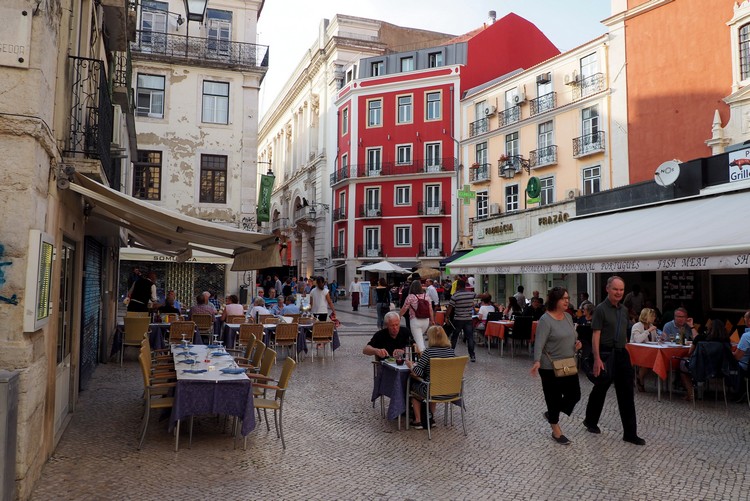
Outdoor Cafés and Restaurants
Similar to many European cities, there are numerous pedestrian-only streets lined with outdoor restaurants and shops. This is one of the aspects we love about Europe.
On our first evening, we wandered along Avenida Liberdade and stumbled upon an area near Restauradores Square filled with restaurants featuring outdoor patios, as shown in the above photo.
These restaurants appear to cater to tourists, with menus available in eight different languages, making it easy for visitors to read. To the left of Nicole in the photo below, you can see one of these large menus.
We enjoyed our meal outside while people-watching—it’s quite a lively area.

We relished tapas and wine on the outdoor patios—cheese and honey? Absolutely delicious!
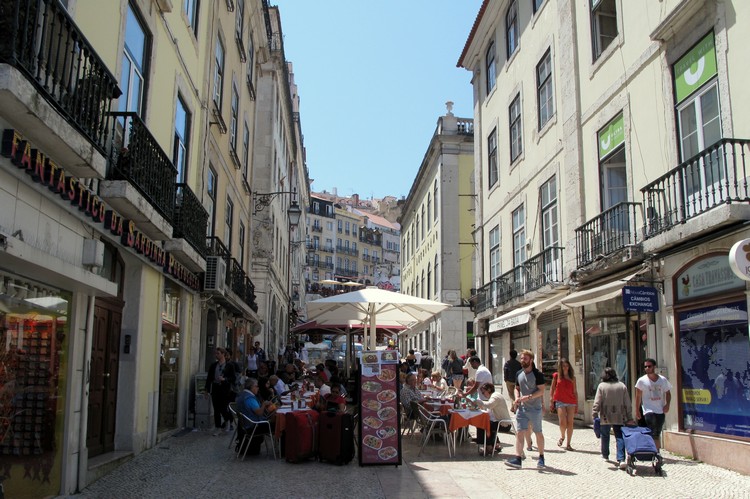

Rows of outdoor restaurants line pedestrian-only Rua Augusta. Notice the elaborate stone pavement.
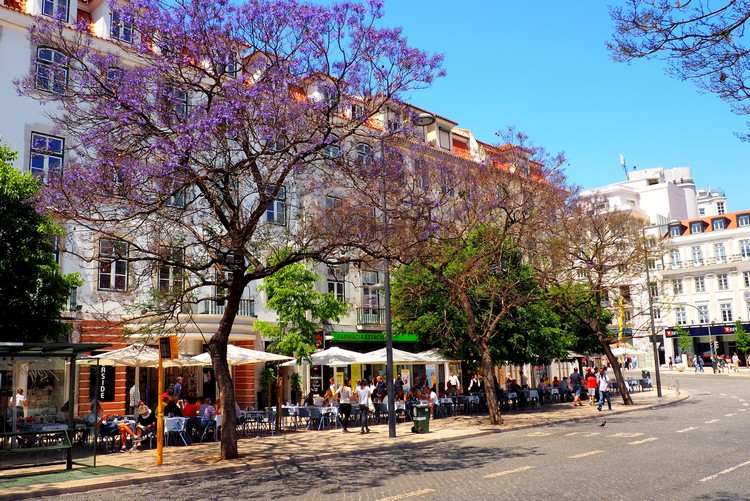
We visited Lisbon in late May, the season when the stunning purple jacaranda trees begin to bloom. Many streets in downtown Lisbon are shaded by jacaranda trees, and in the photo above, you can spot the purple flowers starting to blossom.

Locals gather to watch a soccer match and socialize outdoors on Avenida Liberdade. Check out the sidewalk!

Lisbon’s Infamous Trams and Funiculars
When we mentioned our trip to Lisbon, the most frequent suggestion we received was to ride the iconic Tram 28.
This tram travels from Martim Moniz to Campo Ourique, passing through popular tourist districts like Graça, Alfama, Baixa, and Estrela. As a result, long queues often form to board the tram, making for a crowded and sometimes uncomfortable ride (we saw several trams overflowing with people).
We didn’t take the tram, opting instead for an organized city tour in the morning and choosing to walk around in the afternoon. If we had an extra day in Lisbon, we likely would have grabbed a ride on the tram, if only for the photo opportunity.
Check out this detailed post on how to walk the route of Tram 28 Lisbon.
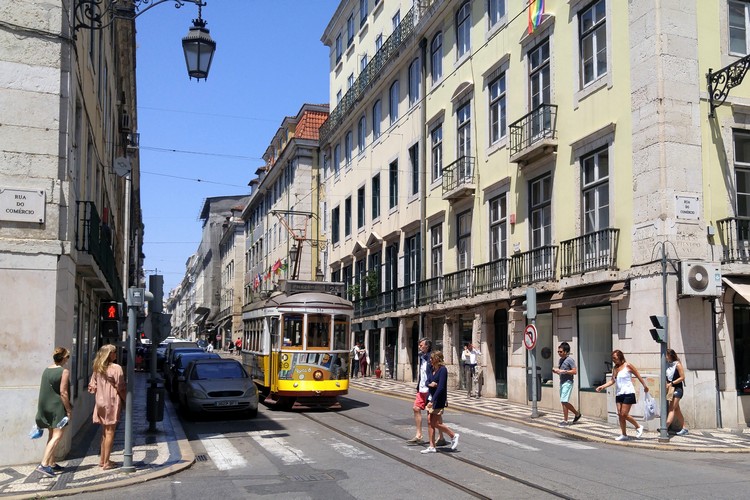

You can’t visit Lisbon without snapping a picture of its iconic yellow or red trams (or even both!).

The most renowned tourist photos of Lisbon showcase its iconic trams and streetcars.
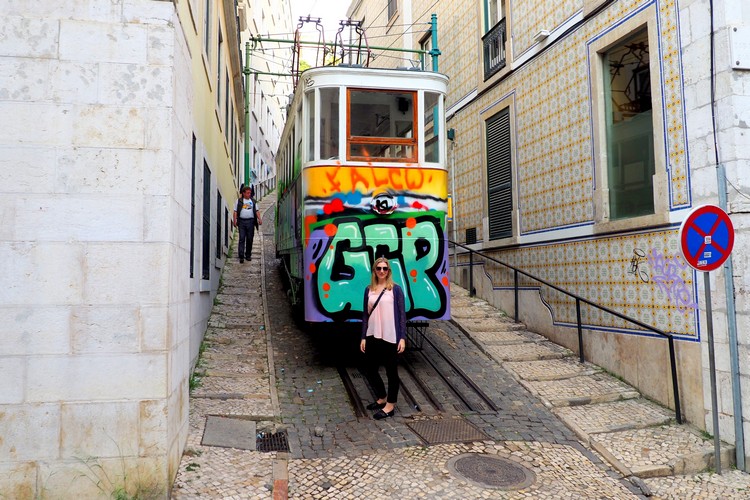

Tuk Tuks and Auto Rickshaws
We are accustomed to seeing tuk tuks and auto rickshaws in Asian countries like Thailand and India, so we were somewhat surprised to find so many in Lisbon.
However, unlike in Asia, this mode of transportation is not particularly cheap in Lisbon. Tuk tuks are primarily used by tourists since they can easily navigate the narrow cobblestone streets that larger vehicles cannot.
We attempted to catch a one-way tuk tuk ride back to our hotel, but the driver wasn’t interested. He indicated that tuk tuk drivers prefer to take visitors on city tours instead.
If you prefer to drive yourself, consider renting a car while in Lisbon.


The image above features rows of tuk tuks, cobblestone streets, open squares, colorful old architecture, and a monumental statue celebrating a significant victory.
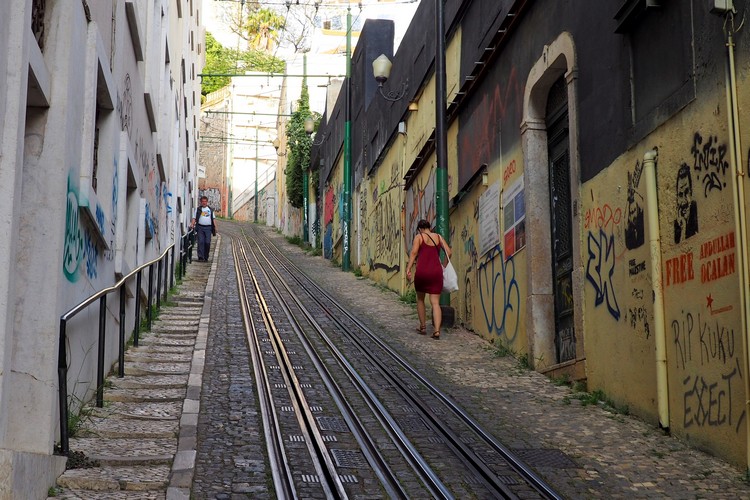
It’s quite a steep climb up the funicular tracks!
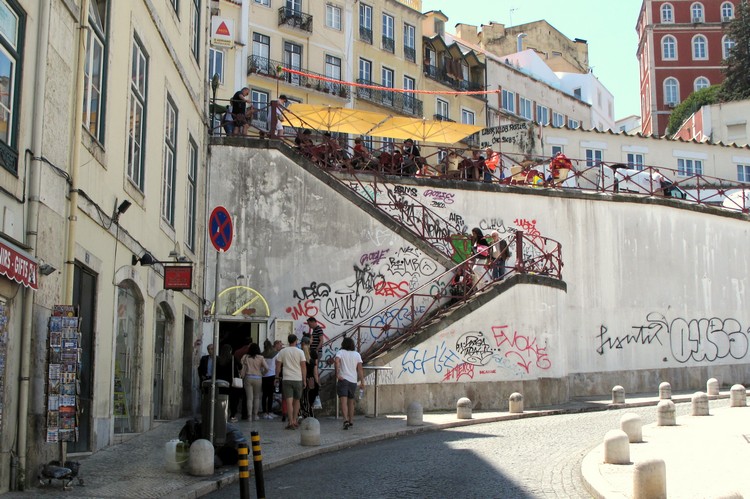
Lisbon is also home to a considerable amount of graffiti and street art, some of which is quite impressive. This particular area? Not so much.

Unexpected Travel Experiences
We cherish spontaneous experiences while traveling. On our first evening in Lisbon, while savoring wine and tapas at an outdoor patio, we sensed an electrifying atmosphere. Something significant was unfolding, but we were in the dark.
Restaurant staff began to pull out their phones to capture photos of elegantly dressed individuals strolling by. It turned out that an important awards ceremony was occurring just 100 meters up the road at Coliseu dos Recreios.
Lucky for us, we arrived in time for the red carpet event.
We were informed that this is the Portuguese equivalent of the Golden Globe Awards in North America. The paparazzi were in full swing that evening. Naturally, we joined in, snapping a few photos of celebrities, though we had no idea who they were.
Please leave a comment below if you recognize any of these celebrities. We’ve been told many of them are soap opera stars. Is that correct?


The red carpet location felt somewhat misplaced, situated on a narrow street directly in front of restaurants and shops. The graffiti on the walls created an interesting contrast against the glamorous atmosphere.
Tourist Attractions and Must-Do Activities in Lisbon
We saw quite a lot during our short visit to Lisbon. To summarize, here are some of the top tourist attractions:
- Belém Tower
- Jerónimos Monastery & Navy Museum (aka Maritime Museum)
- São Jorge Castle
- Stroll through the narrow streets of Alfama
- Enjoy panoramic views at Miradouro de Nossa Senhora do Monte
- Ride the Tram 28 Lisbon line
- Visit Praça do Comércio (Commerce Square) and Rua Augusta Arch
- Walk beneath the trees on Avenida Liberdade
- Check out the observation deck of Santa Justa Lift
- Admire the city’s architecture, tiles, and Portuguese sidewalks
- Explore Restauradores Square and Rossio Square
- Indulge in pastel de nata at an outdoor café
- Ride the funiculars in Gloria, Bica, and/or Lavra
- Visit the Church of Santa Engrácia and Lisbon Cathedral
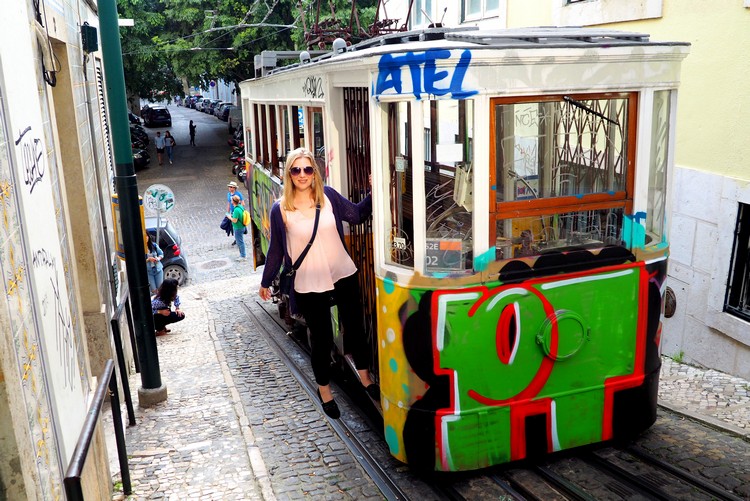
Have you visited Lisbon? What were your impressions?
If not, is Lisbon on your travel wish list?
We would love to hear from you in the comments below.




